Dr. Pepe’s Diploma Casebook: Case 12 – SOLVED!
This week’s case is a 51 year-old woman with a history of chronic urinary tract infection. She consulted for left lumbar pain and intermittent mild fever of several weeks’ duration.
Possible diagnoses:
1. Staghorn calculus with pyonephrosis
2. Staghorn calculus with hydronephrosis
3. Staghorn calculus and renal tumour
4. None of the above
Findings: The abdominal film shows an enlarged left kidney (green arrows) with a large staghorn calculus occupying the calyceal-pelvic area (blue arrow).
Axial (Fig. 3) and coronal (Fig. 4) contrast-enhanced CT images confirm an enlarged, non-functioning left kidney with multiple round low-attenuation areas (Fig. 4, red arrows) replacing the renal parenchyma, and a staghorn calculus (blue arrow). Marked perinephric inflammatory changes are also evident, with thickening of the renal fascia and abdominal wall (green arrows). These findings are highly suggestive of xanthogranulomatous pyelonephritis.
Final diagnosis: Xanthogranulomatous Pyelonephritis
Xanthogranulomatous pyelonephritis (XGP) can be suspected in abdominal films when a diffusely enlarged kidney associated with a staghorn calculus is seen in a patient with a history of chronic urinary tract infection, consulting for malaise and low-grade fever.
CT is the imaging technique of choice for the final diagnosis of XGP because it conclusively confirms the enlarged, poorly functioning or non-functioning kidney and staghorn calculus, and demonstrates the typically multiple, round, low attenuation areas, which represent dilated calyces and pus-filled spaces replacing the renal parenchyma.
CT also clearly shows the severity and extension of inflammatory involvement in adjacent organs and affected tissues, very common features in this inflammatory renal process. Perirenal abscess and fistulas to contiguous organs and soft tissues adjacent to the affected kidney are very common in this disease.
CT is determinant in cases in which abdominal films show only the staghorn calculus, without obvious enlargement of the kidney (Fig. 5, A-C)
In this case, the plain film (Fig. 5a) only shows a staghorn calculus (blue arrow) in an apparently normal sized left kidney. Enhanced CT (Fig. 5b-c) shows typical findings of XGP: multiple, round, hypodense, low attenuation areas (red arrows) in an enlarged non-functioning left kidney and the obstructive staghorn calculus (blue arrows).
Staghorn calculus can cause chronic urinary tract obstruction with severe hydronephrosis and renal parenchyma atrophy, but without inflammatory disease. In this patient, a chronic obstructive left staghorn lithiasis (Fig. 6 blue arrows in a-c) has caused severe renal atrophy with hydronephrosis (red arrows in 6b-c)
Staghorn calculus can be present without urinary tract obstruction or inflammatory renal disease. In this patient with a right kidney staghorn calculus detected on the abdominal plain film (Fig. 7 blue arrows), the contrast-enhanced CT confirms the lithiasis (Fig. 7b blue arrow), but there is no urinary tract obstruction or inflammatory lesions of the kidney (b).
Follow Dr. Pepe’s advice:
- In a patient with persistent low-grade fever in whom the abdominal film shows a staghorn calculus and enlarged kidney, XGP should be suspected
- CT is diagnostic by showing a non-functioning kidney with round, low-attenuation areas and perirenal involvement
- CT also differentiates XGP from severe hydronephrosis and non-obstructive staghorn calculus
Suggested reading: Xanthogranulomatous Pyelonephritis. RadioGraphics 11(3):485-498, 1991
Case prepared by Julio Martin MD

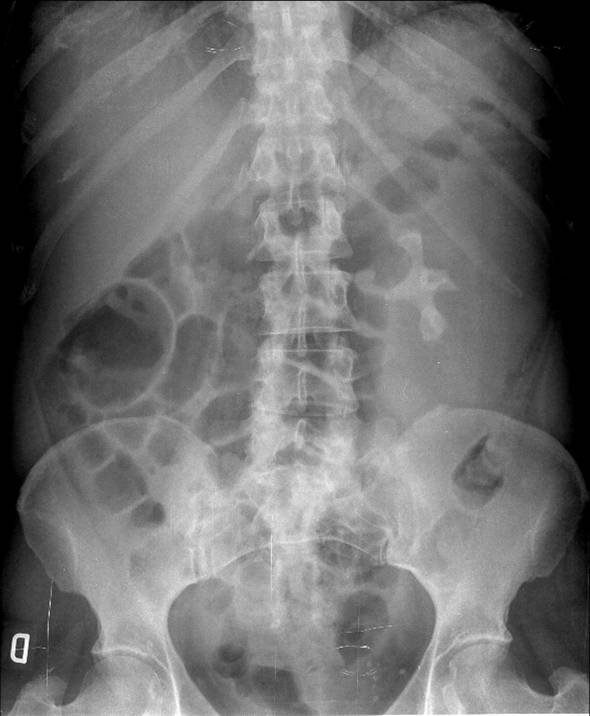
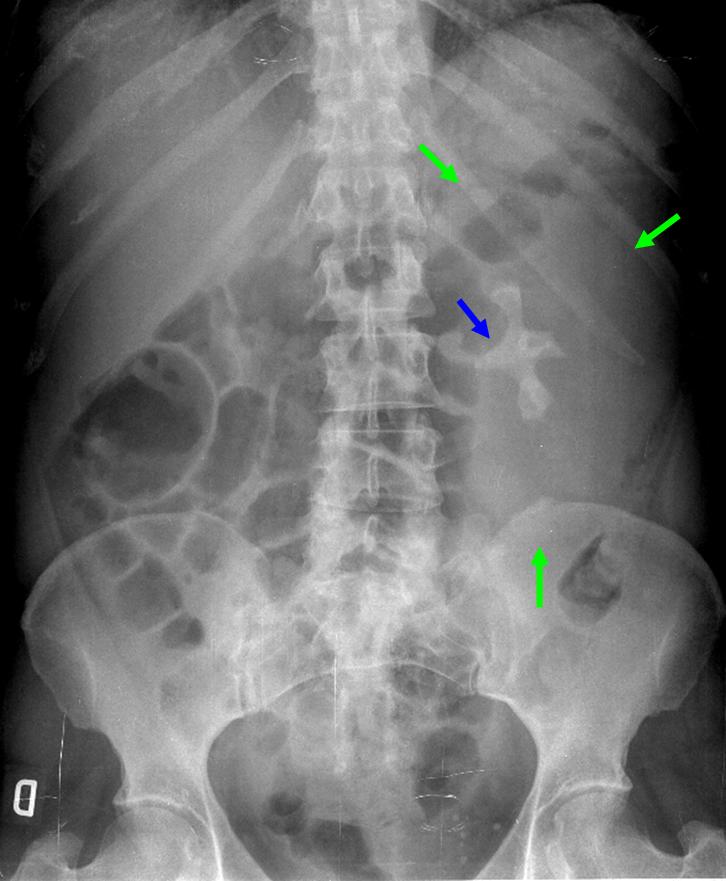
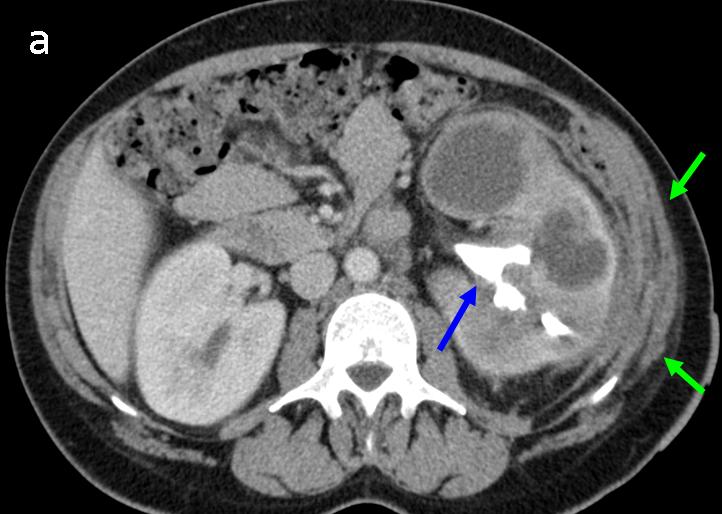

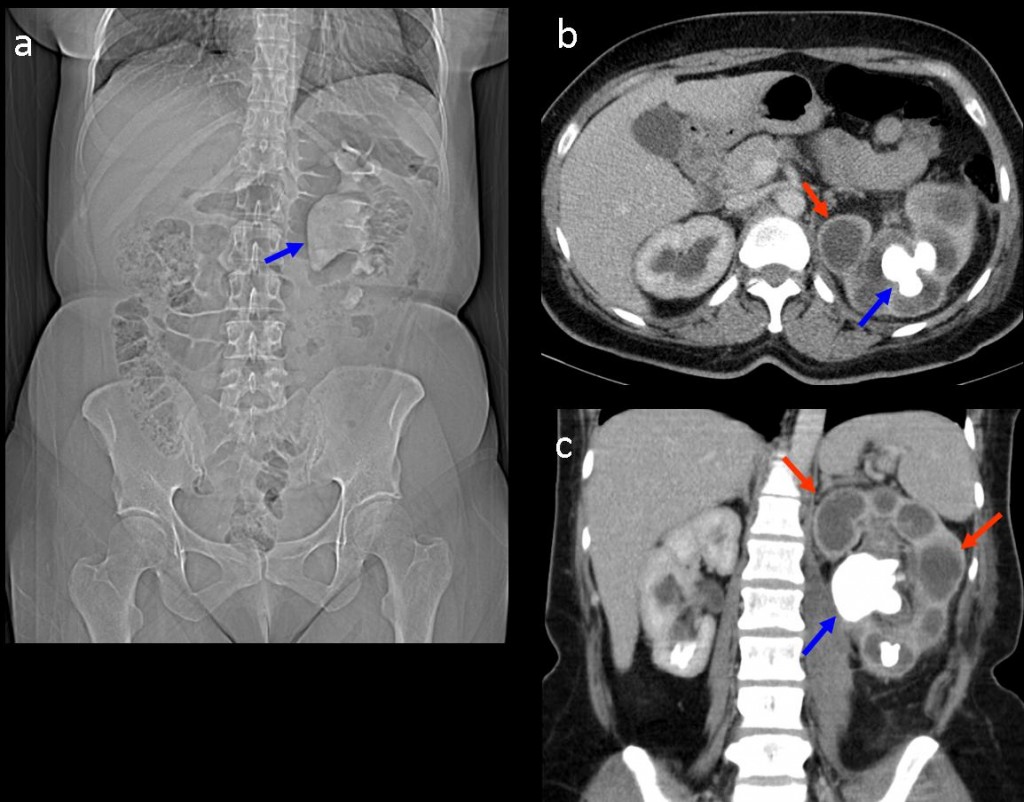
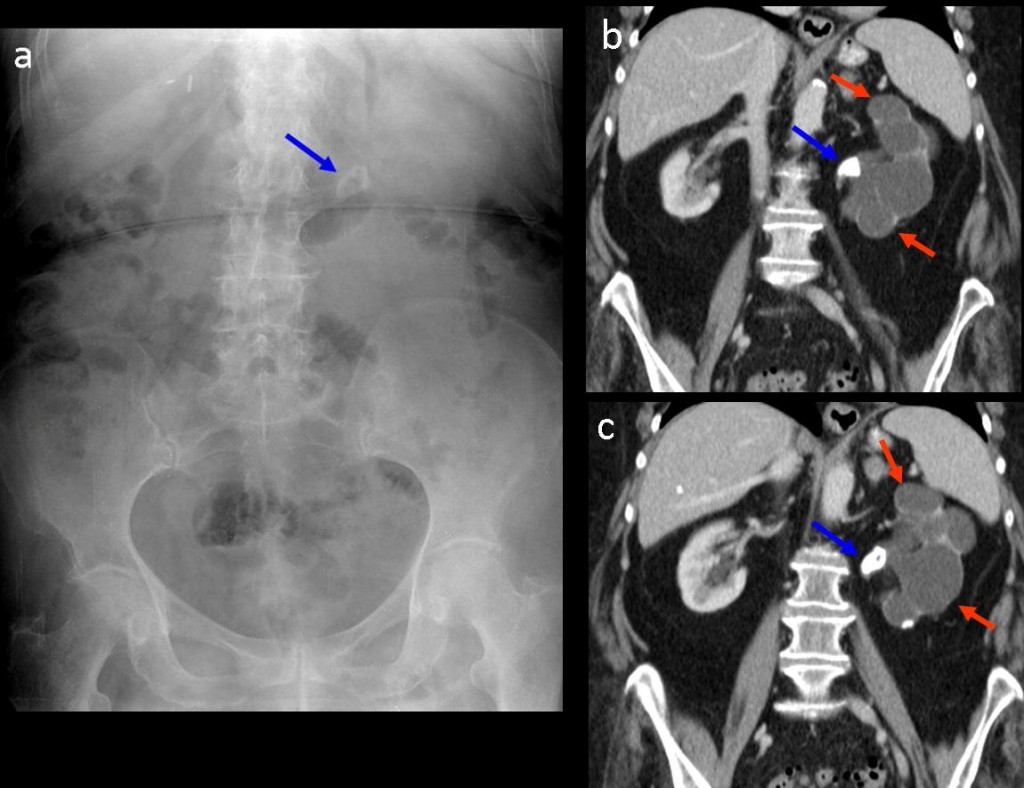
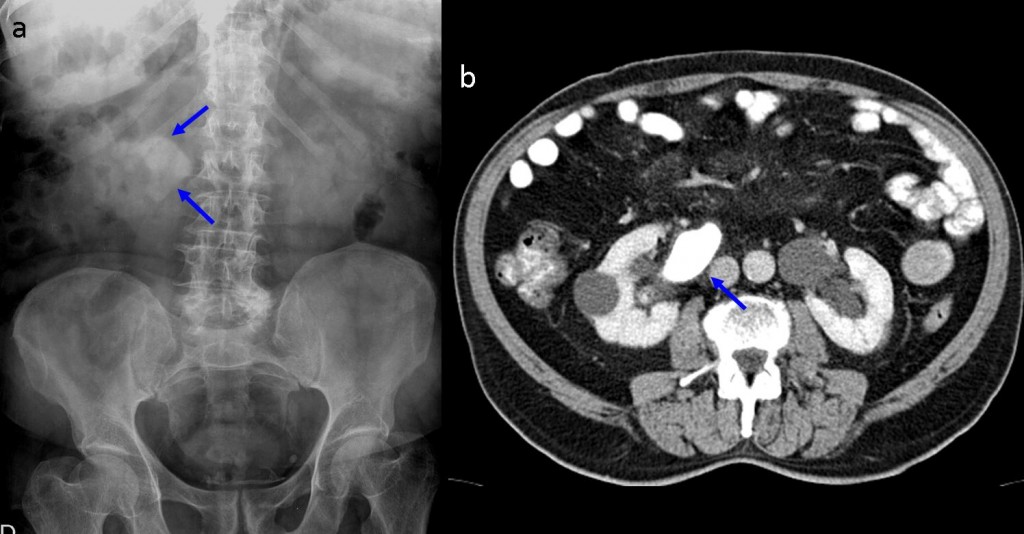



Staghorn calculus with pyonephrosis
Staghorn calculus and mass effect in the left renal fosa with enlargement of renal silouette which obscurate the psoas line and seems to cause displacement of the descendent colon to the left side. In this case I think the entity we have to think of and confirm it with a CT is a Xantogranulomatous Pyelonephritis.
is there a stone at the LT distal ureter there is a shadow at the pelvis is seen.
other wis im in the answer 1
stage horn stone with tumour
I think its answer 3. There is a mass efect and the fever was never high, just mild intermitent. I beleive its a renal tumor stage 3 or 4
most probably staghorn stone with tumor
Il rene sx è aumentato di volume:il DL che normalnente non sorpassa il corpo di 4 vertebre lombari, corrisponde nel caso in esame ad oltre 5 vertebre.L’aumento di volume è diffuso a tutto il rene: si esclude il tumore renale che è “localizzato”( eccezione per l’infiltrazione linfomatosa).Non si può differenziare all’Rx-standard la idronefrosi, dalla pionefrosi( DD con US) il calcolo a stampo é caliceale e non si localizza anche nella pelvi( si esclude la idronefrosi e la pionefrosi).Vi è la storia di IVU cronica, in soggetto femminile, con flogosi.Il tutto è compatibile allora con una pielonefrite cronica, xantogranulomatosi, in cui la calcolosi, predispone all’infezione cronica, con un particolare tipo di infiltratto, grassoso. La TC, confermerà tutti questi dati!
Volevo meglio specificare che il calcolo a stampo è “sopratutto” caliceale, con lieve propaggine naella pelvi.
Staghorn calculus in left kidney which is enlarged- xanthogranulomatous pyelonephritis
None of the above. Xanthogranulomatous pielonephritis.
Dr. Pepe, is true that you will retire?
Give up show busines?? Never!!
Staghorn calculus with pyonephrosis
None of above.
I believe it is xantogranolomatous pyelonephritis with staghorn calculus.
Its staghorn calculus with renal tumour
Staghorn calculus and pyonephrosis
N. 3
You get a prize for brevity
Staghorn calculus with pyonephrosis
Xantogranulomatous pyelonefritis.. Any reward for me??
Sorry, crisis is hitting us hard. Planning a Muppet calendar to cover expenses.